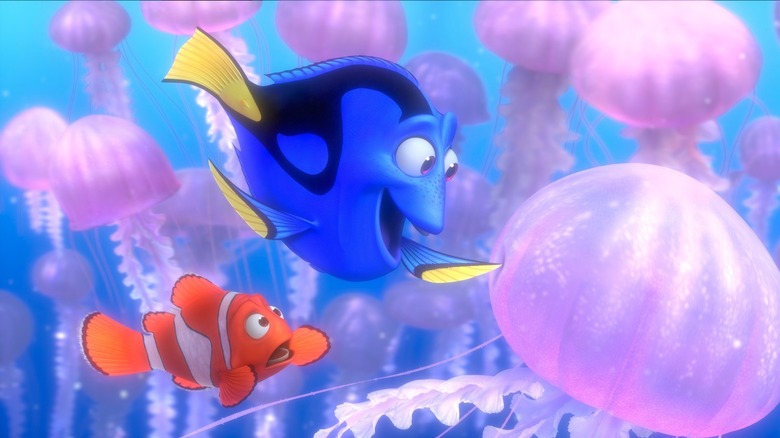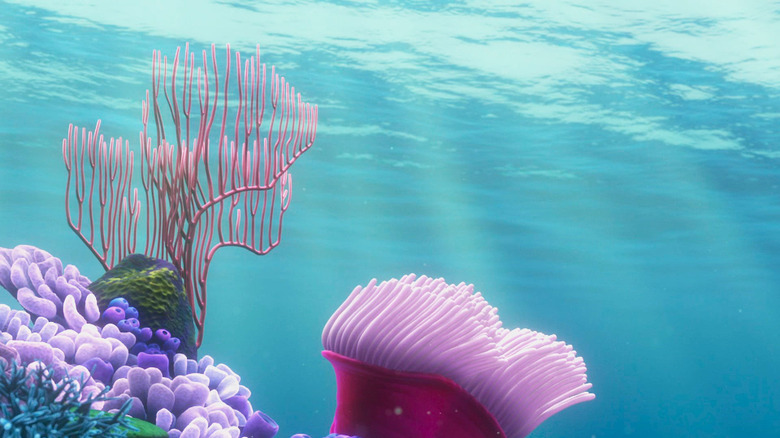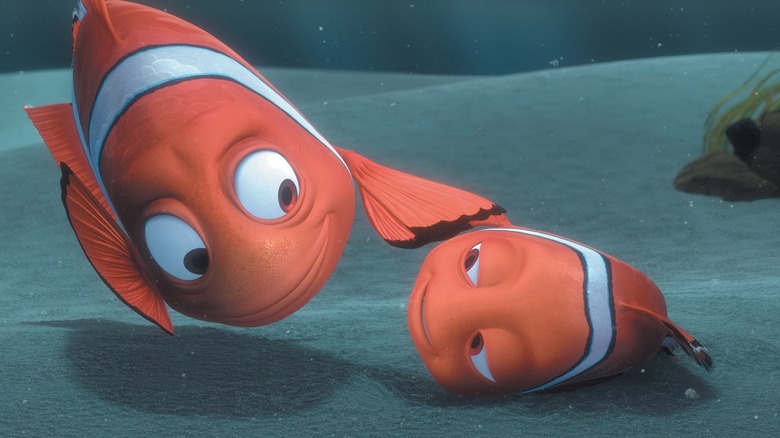The Animation 'Magic Trick' That Made Finding Nemo Work
For over 35 years, Pixar Animation Studios have been praised for not just for pioneering the craft of photorealistic computer animation but also their ability to utilize their technology for emotionally authentic storytelling. While most traditional filmmakers understand the importance of immersing an audience through visual clarity and consistency, this is an especially challenging task for animators, who are often faced with meticulously creating a reflection of reality from the ground up.
While the studio found success in evoking sentimentality through toys, bugs, and hairy monsters, Pixar's fifth feature film "Finding Nemo" presented a unique challenge with no exact, one-size-fits-all solution: how do you tell a story almost entirely underwater?
Director Andrew Stanton opened up about the creation of the film for The Los Angeles Times. He described the process of replicating the coral reef setting of the film as a "magic trick," replicating "the illusion of being underwater" instead of directly simulating water.
Lighting informs every detail
That might be a lot to digest at first, but looking back on Pixar's iconic father and son adventure through the Great Barrier Reef, it's easy to see what Stanton means. Only a handful of moments in the original film show the direct surface and the much more complex water interacting with dry land. Most of the film is set underwater and directly defines "Finding Nemo's" distinct look.
For the Museum of Science, the film's director of photography Sharon Callahan went in depth about the specific lighting techniques that characterized the "feel of underwater." Callahan describes the lighting in scenes bouncing down on the ocean floor in caustic patterns, mimicking how natural light would filter through the surface of the water in real life. While 2D animators would portray underwater through bubbles, this film captured the way particulates are dispersed through the ocean and how light beams would diffuse through them. Light softly bounces off the character models and translucently glows through their skin to provide a sense of physicality and depth.
Without these elements, it would just feel like the fish are swimming through the air.
Exaggeration is key
Along with studying references from nature documentaries and underwater photography books, the art team at Pixar also enrolled in scuba diving classes to experience these details firsthand and capture them through their Renderman software.
While their dedication is still impressive, it's important to stress that even though Pixar has an interest in photorealism, Stanton and Callahan both stress that storytelling comes first. "Finding Nemo's" depiction of the ocean, similar to many other aspects of animation, is so identifiable because of its exaggerated caricature. That room for creativity is ultimately why this animated treasure from 2003 still feels like it has a pulse.
While technology has progressed since the early days of Pixar, the artistic accomplishments of "Finding Nemo" have proved foundational for the future of CG animation. Since then, new versions of Pixar's Renderman tool would include innovative shaders for all of its users to play with water in their scenes, and these concepts would eventually be revisited and expanded upon in "Finding Dory" including much more scenes interacting with the sea's surface.
Next time you find yourself in a cinema, sitting in awe at the "Avatar: The Way of the Water" trailer, remember what was accomplished on the Pixar campus in Emeryville, California.


